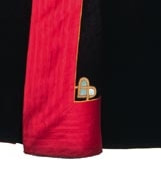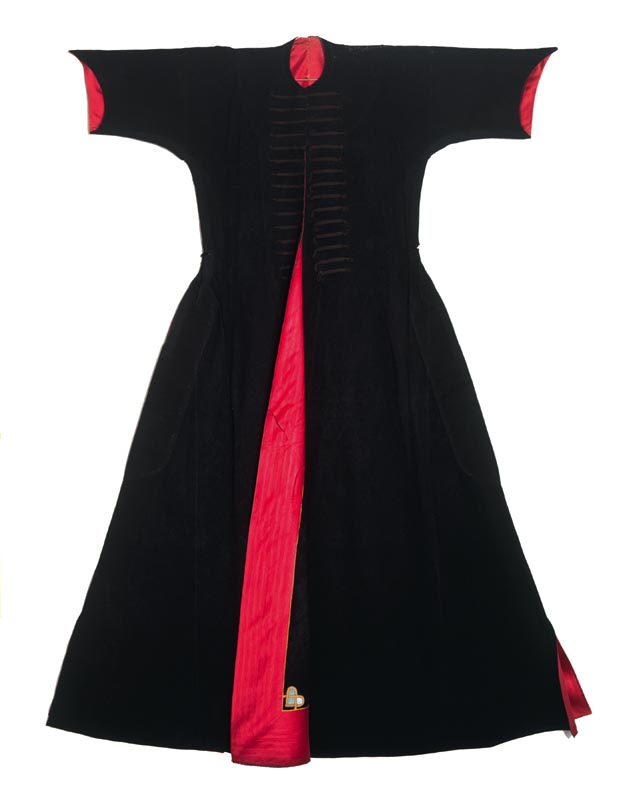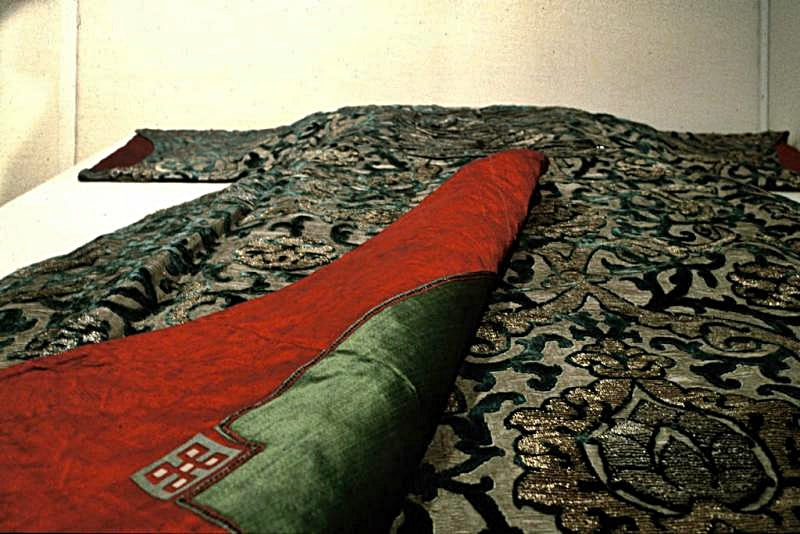
I feel like I don't post on here often enough and I think my problem is that I tend to write such long posts that they are easy to put off. So I want to disrupt that pattern by trying out some shorter posts where I limit myself to a single cool thing.
And I'm constantly finding new cool things as I am writing the book.
So we know that in the Ottoman empire some garments were made at home and some came from royal workshops. We also know that there were commercial tailor's shops and guilds. And we also know that humans are sometimes lazy.
So a ferace is essentially an Ottoman overcoat. It was lined, sometimes with fabric and sometimes with fur and it featured facings on the edges of the garment at the neck, sleeves, center front and hem.
Caftans were frequently bordered this way as well. (And I have some new information about how the borders were sewn. More on that in the book, or in another post.)
In Fashion at the Ottoman Court, Taksin references municipal laws "in Istanbul, Bursa and Edirne dated 1502 but relying on laws from 1477, require that the fringe that crossed the front opening and the perimeter of a ferace's skirt could not be pasted with glue but had to be attached through sewing, as had been customary in earlier times."
I love finding random stuff like this. It gives me a different perspective and that is a good thing. One of the main challenges with early Ottoman clothing research is that while we have a lot of extant garments, they are mostly ones that were made for high-ranking members of the court. And the ones that are chosen for display in museums and reproduced in books are the fancy, splashy, unusual complicated ones that were worn for very formal occasions.
It's like if the only sources our descendants had for early 21st century clothing were things that were worn on the red carpet at the Academy Awards.
Interesting, but hugely, massively skewed.
So the glue laws makes me ask myself a bunch of questions.
1. How common was this practice, really? (The fact that legislation persisted in time and location tells me it wasn't just a law aimed at that jerk who has a shop near Galata Bridge)
2. Was it something that bothered people or did they just know that if you bought a garment at a particular price point that you needed to take the time to hand-sew the facings on yourself?
3. Could someone look at a garment being worn and be able to tell that it had cheap glued borders?
4. Did the glue saturate the fabric and soak through?
5. Did the glued border change the way the garment hung?
6. What kind of glue?
7. What price range are we talking about?
Any thoughts, my darlings?
(So this is what a 'short post' looks like, apparently.)


